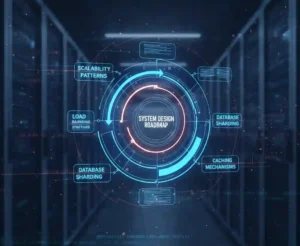A Comprehensive Guide to Cybersecurity Acronyms
In the ever-evolving field of cybersecurity, understanding the vast array of acronyms is crucial for professionals and enthusiasts alike. This guide provides a comprehensive overview of some of the most common cybersecurity acronyms, categorized for easy reference. Knowing these acronyms helps in navigating the complex landscape of cybersecurity standards, tools, attack types, metrics, and certifications.
Tools
IDS (Intrusion Detection System)
Function: Monitors network traffic for suspicious activity and alerts administrators.
Example: Snort is a popular open-source IDS.
SIEM (Security Information and Event Management)
Function: Provides real-time analysis of security alerts generated by applications and network hardware.
Example: Splunk is widely used for SIEM purposes.
WAF (Web Application Firewall)
Function: Protects web applications by filtering and monitoring HTTP traffic between a web application and the Internet.
Example: Cloudflare WAF protects against common web exploits.
General Functions
VPN (Virtual Private Network)
Function: Extends a private network across a public network, enabling users to send and receive data as if their devices were directly connected to the private network.
Example: NordVPN is a well-known VPN service.
MFA (Multi-Factor Authentication)
Function: Enhances security by requiring multiple forms of verification before granting access.
Example: Google Authenticator provides a second layer of security.
DLP (Data Loss Prevention)
Function: Monitors and controls the movement of data across an organization’s network to prevent data breaches.
Example: Symantec DLP helps protect sensitive data.
Standards & Frameworks
NIST (National Institute of Standards and Technology)
Role: Develops cybersecurity standards and guidelines.
Example: The NIST Cybersecurity Framework (CSF) provides a policy framework for private sector organizations.
ISO (International Organization for Standardization)
Role: Publishes international standards, including those for information security management.
Example: ISO/IEC 27001 is a specification for an information security management system (ISMS).
HIPAA (Health Insurance Portability and Accountability Act)
Role: Sets standards for the protection of health information in the US.
Example: Ensures that healthcare providers implement secure electronic health records (EHRs).
Attack Types
DDoS (Distributed Denial of Service)
Function: An attack where multiple compromised systems are used to target a single system, causing a denial of service.
Example: The Mirai botnet attack on Dyn disrupted major internet services in 2016.
SQLi (SQL Injection)
Function: A code injection technique used to attack data-driven applications by inserting malicious SQL statements into an entry field.
Example: Exploiting a vulnerable login form to access a database.
XSS (Cross-Site Scripting)
Function: An attack where malicious scripts are injected into trusted websites.
Example: A hacker uses XSS to steal cookies and session tokens from a user.
Metrics
MTTD (Mean Time to Detect)
Definition: The average time it takes to detect a security incident.
Importance: Shorter MTTD means quicker identification of potential breaches.
MTTR (Mean Time to Respond)
Definition: The average time it takes to respond to a security incident.
Importance: Lower MTTR indicates more efficient incident response capabilities.
CVSS (Common Vulnerability Scoring System)
Definition: A standardized system for rating the severity of security vulnerabilities.
Importance: Helps organizations prioritize their response based on the severity of vulnerabilities.
Certifications
CISSP (Certified Information Systems Security Professional)
Provider: (ISC)²
Importance: Recognized globally as a standard for information security professionals.
CEH (Certified Ethical Hacker)
Provider: EC-Council
Importance: Validates skills in identifying and addressing security weaknesses.
CISM (Certified Information Security Manager)
Provider: ISACA
Importance: Focuses on managing and governing enterprise information security.
Fun Acronyms
PEBKAC (Problem Exists Between Keyboard And Chair)
Meaning: A user error.
Example: An employee repeatedly forgetting their password.
RTFM (Read The Freaking Manual)
Meaning: A sarcastic way to suggest that someone read the documentation.
Example: Advising a colleague to RTFM when they ask a basic question covered in the manual.
PICNIC (Problem In Chair Not In Computer)
Meaning: Another term for user error.
Example: Blaming the software when it’s actually a user’s misunderstanding.
Practical Application
Understanding these acronyms and their applications can significantly enhance your cybersecurity knowledge and proficiency. Here are a few ways to apply this knowledge:
Security Audits: Use SIEM tools like Splunk to analyze security alerts.
Compliance: Ensure your organization adheres to standards like NIST CSF or HIPAA for regulatory compliance.
Incident Response: Improve MTTD and MTTR metrics by implementing robust detection and response strategies.
Professional Development: Pursue certifications like CISSP or CEH to advance your career in cybersecurity.
Conclusion
Cybersecurity acronyms can seem overwhelming, but breaking them down into categories helps make them more manageable. Whether you’re just starting in cybersecurity or looking to deepen your expertise, understanding these acronyms is a crucial step. Keep this guide handy as a reference to navigate the complex and fascinating world of cybersecurity.


















